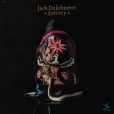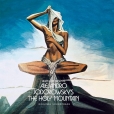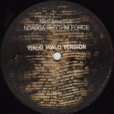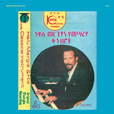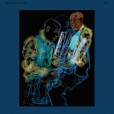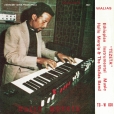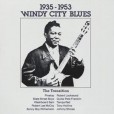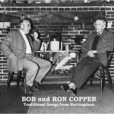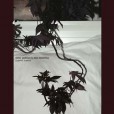Your basket is empty

‘Numero does it again: a whole new discovery. Made some music between ’79 and ’82. Never came out until now, so the backing tracks were mixed by the Phenomenal Handclap Band’s Sean Marquand. You know what I love about that period? Around that era, it’s like jazz, funk, and disco mixed together… you get this unique sound… bands like Light Of The World and Hi-Tension… This could almost be British from that era. It’s my album of the week’ (Gilles Peterson).
Three killers heralding the latest phase of this dazzling expression of a dream Dakar-Berlin nexus. All instrumental — though the opener has snatches of singing — with the vocal versions held back for the album.
The music just gets deadlier and deadlier — harder-boiled and deeper; more focussed, confident and dubwise.
Evoking the ancient cultural legacy of the griots, ‘Walo Walo’ is also the name of the sabar rhythm underlying the opener, which features Ibou Mbaye’s percussive synth-work, Mangone Ndiaye Dieng’s kit-drumming, and Bada Seck’s rigorous jolts of lower-pitched Thiol drum. The ‘Groove’ version is tough as nails; well and truly gnarly.
A tribute to the Baye Fall leader, Ndiguel Groove is a sparse, mellow interpretation of the most traditional cut on the album, showcasing Assane Ndoye Cisse’s insinuating guitar lines, Laye Lo’s super-elasticated snare-drumming, and Bada Seck playing the khine drums associated with the Baye Fall. (Short and wide; lightweight but low-pitched.)
Pretty awesome.
Five years into the project, Yermande announced a thrilling new phase for this Dakar-Berlin collaboration; a giant step forward.
The group of players was boiled down to twelve for recordings, eight for shows; sessions in Dakar become steeply more focussed. ‘This time around I was better able to specify what I wanted right from the initial recording sessions in Dakar,’ says Ernestus; ‘and further in the production process I took more freedom in reducing and editing audio tracks, changing MIDI data, replacing synth sounds and introducing electronic drum samples.’
Right away you hear music-making which has come startlingly into its own. Rather than submitting to the routine, discrete gradations of recording, producing and mixing, the music is tangibly permeated with deadly intent from the off. Lethally it plays a coiled, clipped, percussive venom and thumping bass against the soaring, open-throated spirituality of Mbene Seck’s singing. Plainly expert, drilled and rooted, the drumming is unpredictable, exclamatory, zinging with life. Likewise the production: intuitive and fresh but utterly attentive; limber but hefty; vividly sculpted against a backdrop of cavernous silence.
Six chunks of stunning, next-level mbalax, then, funky as anything.
Whoa this record is totally killer.
Intensely concentrated, but with a fresh spontaneity; super-charged with expressivity.
The singing is riveting, diva-esque; the mbalax rhythms are dazzling.
At every turn there are sensational, thrilling injections of Basic Channel and Rhythm & Sound.
Hotly recommended; it’s a must.
Khadim is a stunning reconfiguration of the Ndagga Rhythm Force sound. The instrumentation is radically pared down. The guitar is gone; the concatenation of sabars; the drum-kit. Each of the four tracks hones in on just one or two drummers; otherwise the sole recorded element is the singing; everything else is programmed. Synths are dialogically locked into the drumming. Tellingly, Ernestus has reached for his beloved Prophet-5, a signature go-to since Basic Channel days, thirty years ago. Texturally, the sound is more dubwise; prickling with effects. There is a new spaciousness, announced at the start by the ambient sounds of Dakar street-life. At the microphone, Mbene Diatta Seck revels in this new openness: mbalax diva, she feelingly turns each of the four songs into a discrete dramatic episode, using different sets of rhetorical techniques. The music throughout is taut, grooving, complex, like before; but more volatile, intuitive and reaching, with turbulent emotional and spiritual expressivity.
Not that Khadim represents any kind of break. Its transformativeness is rooted in the hundreds upon hundreds of hours the Rhythm Force has played together. Nearly a decade has passed since Yermande, the unit’s previous album. Every year throughout that period — barring lockdowns — the group has toured extensively, in Europe, the US, and Japan. With improvisation at the core of its music-making, each performance has been evolutionary, as it turns out heading towards Khadim. “I didn’t want to simply continue with the same formula,” says Ernestus. “I preferred to wait for a new approach. Playing live so many times, I wanted to capture some of the energy and freedom of those performances.” Though several members of the touring ensemble sit out this recording — sabar drummers, kit-drummer, synth-player — their presence abides in the structure and swing of the music here…
At his best in this call-to-arms, originally released on Black Art in 1977; but it’s all about Lee Perry’s genius at the desk. Stunning dub.
Four lost works by the electro-acoustic pioneer and GRM stalwart: Electrucs!, a synthesizer soundtrack to an imaginary film, from 1974; Foliphonie, a kind of postscript to his own La Grande Polyphonie, the same year; Cinq Dessins En Rosace, from 1973; and Marpège, dedicated to Bernard Parmegiani, from 1995.
Outstanding, laid-back gospel from 1979 — possessed by the sublimity of Bobby Womack — originally issued on its own S&K label by the Sanders family, from the Witness Of Jesus Christ church in Fresno, California.
The opener is the killer shit; knockout soul music about dying. We could listen to it for days on end.
A second volume of ‘the best and rarest Chicago blues of the early postwar era.’ Little Walter, Muddy Waters, Sunnyland Slim, Floyd Jones, Snoooky Pryor, Roosevelt Sykes… all present and correct.
You need it for Johnny Shines’ Living In The White House, about setting society to rights, over the rocking saxophone of J.T. Brown. ‘I want to live in paradise, make servants out of kings and queens / Now don’t shake me please darlin / This is one time I want to finish my dream.’
It’s a one-man-band evocation of the traditional accordion sound of his youth, adding a Moog, Rhodes and beat box. Light and fleet-footed, but questing and utterly heartfelt.
Switched-on Ethiopiques, refreshing and lovely as anything. No doubt insufficiently solemn and inauthentically-authentic for World Music plod, but hotly recommended by us.
Taking a break from cabbing duties back home in Washington DC, for his first LP in fifteen years. Ethiopian standards and originals; his unmistakable melodica, accordion and keys, in the same double-bass-and-drums setting as recent live shows.
‘Primarily the work of Southern born bluesmen who immigrated to Chicago before the Second World War, but whose careers endured into the postwar era,’ this was the first Nighthawk release, with the label taking its name from a Robert McCoy recording featuring Big Joe Williams and Sonny Boy Williamson, included here. (‘I have prowled so long / Till it made my knee bones sore.’) With Big Bill Bronzy, Tampa Red, Washboard Sam, Johnny Shines and co.
Still a blast of fresh air. Profoundly influential late-50s, early-60s recordings of rare southern English harmony singing from the Copper Family, which can trace its roots in traditional song back at least two hundred years. Gems about labour, nature, sex, beer, the weather, wandering… Hard Times Of Old England is here.


